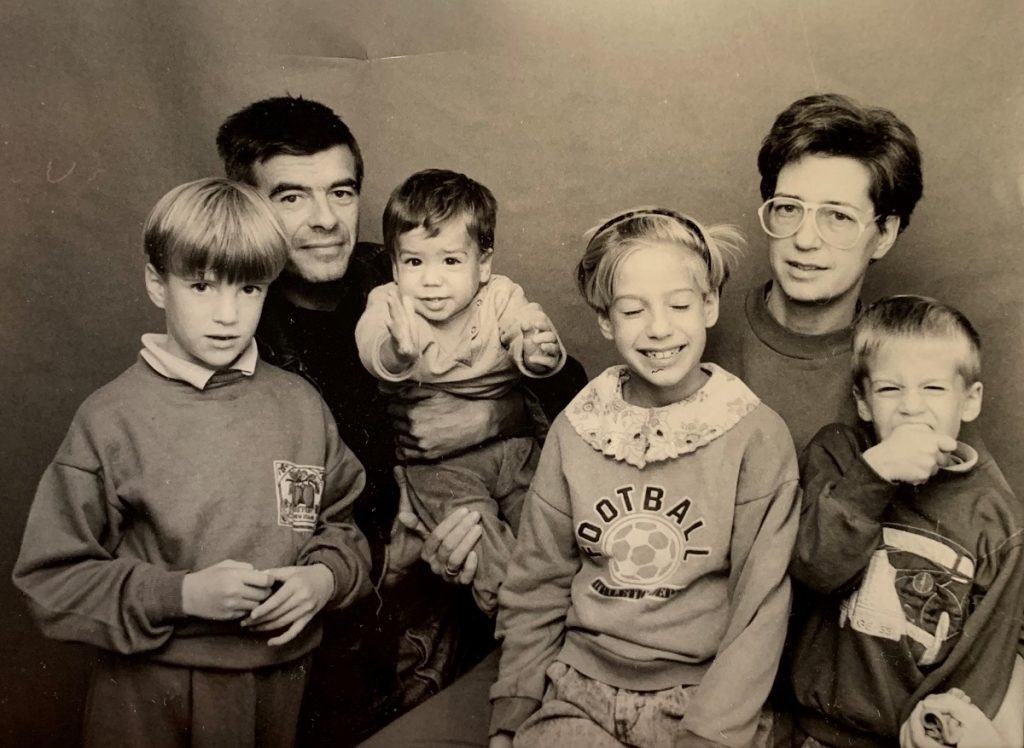At around noon yesterday, beasts – they can’t be called otherwise – in the gray-olive armoured vehicles of the Yugoslav military without provocation shot Žarko Kaić of Zagreb, a cameraman with Croatian State Television (CST) in the head and severely wounded his sound engineer Dragan Krička, also from Zagreb. The third member of the team, Saša Kopljar, a journalist with CST’s Osijek studios who was nearby, escaped by throwing himself on the ground while armour piercing bullets from the heavy machine gun of a personnel carrier menacingly whistled above his head.
These words from Glas Slavonije described the incident of 28 August 1991 which is still remembered by Croatian State Television as one of the darkest days of the Homeland War. On that day, next to the infamous “C” military range in the Osijek suburb of Brijest, a three-member team of CST was targeted by the Yugoslav People’s Army (YPA).

In the morning, the team went to film the places that were fired upon from the YPA range the previous night. Just before 8:00 AM, a column of nine YPA tanks and two armoured personnel carriers emerged from the base and took up combat positions. This blocked traffic between the village of Tenjski Antunovac and Osijek. After a while, some tanks departed for Tenja and all this activity was recorded by Žarko Kaić.
After the transporter opened fire several times into the air, two members of the National Guard Corps approached the YPA troops at approximately 11:00 AM and asked when the tanks would be removed. They were told within 10 minutes but that did not happen. Instead, the YPA transport opened fire on the CST team, hitting Žarko Kaić in the head and killing him instantly. General Milan Aksentijević of the Yugoslav People’s Army tried to justify Kaić’s murder by saying that the camera on his shoulder resembled an anti-tank rocket launcher.

Žarko Kaić was born on 7 March 1949 in Livno, Bosnia-Herzegovina and grew up in Zagreb with his older sisters Ankica and Blaženka. He graduated from the Academy of Dramatic Arts in Zagreb and worked at CST’s Zagreb Studios as a cameraman in the Children’s, Documentary, Science-Educational, Music-Entertainment and Cultural and Information Program since 1970. Kaić is remembered as a self-sacrificing, quiet and very hardworking family man. He was married to Lidija and they had four children – daughters Petra and Nika and sons Stjepan and Marko.

At the beginning of the Homeland War, he captured footage that shook both Croatia and the world, such as that of refugees from Aljmaš, Erdut and Dalj frantically boarding a barge on the Danube to reach safety.
The Croatian Journalists’ Association named its annual Award for Cinematography in honour of Žarko Kaić and a memorial entitled The Last Shot stands at the location where he was killed.
Photos – private archive
Sources
Literature
Turić, Gordana. U viteza krunica (knjiga III). Zagreb: Udruga roditelja poginulih branitelja Domovinskog rata grada Zagreba, 2008
TV
Pucanj u istinu. Croatian State Television. screenwriter and director Žarko Dovranić, 2015
TV Kalendar. Croatian State Television. author Vedran Kursar/Tomislav Šulj, chief editor Vladimir Brnardić, August 28, 2016
Graduated with a Master’s Degree in History from the University of Zagreb. He has worked at the Croatian History Museum and as a researcher for the popular TV Calendar program for Croatian Radio and Television. He has authored several books and documentaries about Croatia’s Homeland War and is the creator/producer of the immensely popular “It Happened on this Day – Homeland War” Facebook page as well as the online portal Domovinskirat.hr. Borna also is the host and editor of the daily segment “Patriotic Minutes” on Croatian Catholic Radio. He created CroHis to promote the values of the Homeland War and ensure that the sacrifices of those who defended Croatia’s independence would not be forgotten.

